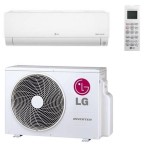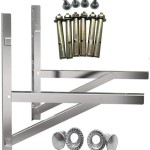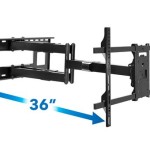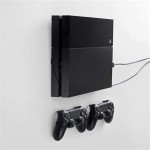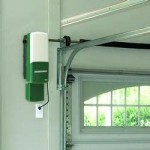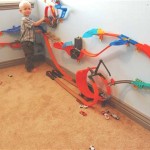Kitchen Pot Rack Wall Mount: Optimizing Space and Enhancing Functionality
Kitchen pot racks, particularly those designed for wall mounting, represent an efficient and aesthetically pleasing solution for organizing cookware in both residential and commercial kitchens. They offer a readily accessible storage system, freeing up valuable cabinet and counter space while simultaneously contributing to the overall visual appeal of the cooking environment. This article will explore the benefits, considerations, and various types of kitchen pot rack wall mounts, providing a comprehensive overview for individuals contemplating incorporating this organizational tool into their kitchen design.
The primary function of a kitchen pot rack is to provide organized storage for pots, pans, and other cooking utensils. Traditionally, these items are stored within kitchen cabinets, occupying significant space that could otherwise be used for dry goods, appliances, or other kitchen essentials. Wall-mounted pot racks leverage vertical space, utilizing an area that is often underutilized. By hanging cookware, the need to stack pots and pans within cabinets is eliminated, preventing scratches and damage and improving the longevity of the cookware.
Beyond functional storage, wall-mounted pot racks also serve as a decorative element within the kitchen. The visual display of cookware can contribute to a more professional and inviting atmosphere, particularly in kitchens designed with an open layout. The material and style of the pot rack can be chosen to complement the existing décor, enhancing the overall aesthetic of the kitchen.
Key Point 1: Benefits of Utilizing a Wall-Mounted Pot Rack
The advantages of installing a wall-mounted pot rack extend beyond mere storage optimization. Several key benefits contribute to their increasing popularity in modern kitchen design.
Space Optimization: This is arguably the most significant benefit. By moving pots and pans from cabinets to a wall-mounted rack, considerable cabinet space is freed up. This allows for more efficient organization of other kitchen items, reducing clutter and improving the overall functionality of the kitchen.
Improved Accessibility: Hanging cookware on a rack ensures that each piece is readily accessible. Unlike digging through stacks of pots and pans in a cabinet, the desired item can be quickly located and retrieved. This saves time and effort during meal preparation, streamlining the cooking process.
Enhanced Durability: Stacking cookware within cabinets often leads to scratches and dents. A wall-mounted pot rack eliminates this risk by providing individual hanging space for each item, preserving the condition of the cookware and extending its lifespan.
Aesthetic Appeal: Well-chosen pot racks can enhance the visual appeal of a kitchen. They can be selected to complement the existing décor, adding a touch of elegance or rustic charm. The visual display of cookware can also create a more inviting and professional cooking environment.
Improved Ventilation: Hanging cookware allows for better air circulation, preventing the build-up of moisture that can contribute to rust or corrosion. This is particularly beneficial for pots and pans that are frequently used and washed.
Key Point 2: Considerations When Choosing a Wall-Mounted Pot Rack
Selecting the right wall-mounted pot rack requires careful consideration of several factors, including the weight capacity, material, size, style, and installation requirements. Neglecting these factors can result in an unsuitable rack that fails to meet the specific needs of the kitchen.
Weight Capacity: It is crucial to accurately assess the weight of the cookware that will be hung on the rack. The selected rack must have a sufficient weight capacity to safely support the combined weight of all items. Exceeding the weight limit can lead to structural failure and potential damage to the cookware or the wall.
Material: Wall-mounted pot racks are typically constructed from metal, such as stainless steel, wrought iron, or copper. Each material offers different aesthetic qualities and durability characteristics. Stainless steel is known for its corrosion resistance and modern appearance. Wrought iron provides a more rustic and traditional look. Copper offers a unique and elegant aesthetic. The chosen material should complement the existing kitchen décor and provide adequate strength and durability.
Size and Dimensions: The size of the pot rack should be appropriate for the available wall space and the amount of cookware to be stored. A rack that is too large can overwhelm the space and appear cluttered. Conversely, a rack that is too small may not provide sufficient storage capacity. Careful measurement of the available wall space is essential prior to selecting a rack.
Style and Design: Wall-mounted pot racks are available in a wide range of styles and designs, from simple and minimalist to ornate and decorative. The style of the rack should complement the overall design aesthetic of the kitchen. Consider the shape, finish, and decorative elements of the rack to ensure it blends seamlessly with the existing décor.
Installation Requirements: Installing a wall-mounted pot rack requires careful attention to detail. The rack must be securely mounted to the wall studs to ensure it can safely support the weight of the cookware. It is recommended to use appropriate hardware, such as heavy-duty screws and anchors, to provide a secure and stable installation. In some cases, professional installation may be necessary, particularly if the wall is made of drywall or plaster.
Accessibility and Placement: The placement of the pot rack should be convenient and accessible. Ideally, it should be located near the stove or cooking area to minimize the distance required to retrieve cookware during meal preparation. The height of the rack should also be considered to ensure that all items are easily reachable. Avoid placing the rack in areas that could obstruct walkways or create a safety hazard.
Key Point 3: Types of Wall-Mounted Pot Racks
The market offers a variety of wall-mounted pot rack designs, each with its own unique features and benefits. Understanding the different types of racks can facilitate a more informed purchasing decision.
Straight Bar Racks: These are the simplest type of wall-mounted pot rack, consisting of a straight bar with hooks or pegs for hanging cookware. They are typically made of stainless steel or wrought iron and are available in various lengths. Straight bar racks are a good option for small kitchens with limited wall space.
Shelf Racks: These racks combine a shelf with hanging hooks or pegs. The shelf provides additional storage space for cookbooks, spices, or other kitchen items. Shelf racks are a versatile option that offers both storage and display functionality.
Grid Racks: These racks feature a grid-like design with hooks or pegs attached to the grid. They are typically made of metal and offer a large storage capacity. Grid racks are a good option for larger kitchens or for individuals with a significant amount of cookware.
Corner Racks: Designed to fit into corners, these racks are ideal for maximizing space in smaller kitchens. They typically have a triangular or quarter-circle shape and offer a convenient storage solution for corners that would otherwise be unused.
Decorative Racks: These racks are designed to be visually appealing, often featuring ornate details or unique shapes. They can be made of various materials, including copper, brass, or wrought iron. Decorative racks are a good option for individuals who want to add a touch of elegance or personality to their kitchen.
The selection of a wall-mounted pot rack is a multifaceted decision that should be based on a thorough evaluation of individual needs and preferences. Factors such as kitchen size, cookware volume, budget, and aesthetic considerations should all be taken into account. By carefully considering these factors, individuals can select a wall-mounted pot rack that not only optimizes storage space but also enhances the functionality and visual appeal of their kitchen.
Furthermore, regular maintenance is important to ensure the longevity and safety of the wall-mounted pot rack. Periodically inspect the rack for any signs of damage, such as rust, cracks, or loose screws. Clean the rack regularly with a mild detergent and water to remove grease and grime. Tighten any loose screws or fasteners to maintain the rack's stability and weight capacity. By following these simple maintenance tips, individuals can ensure that their wall-mounted pot rack continues to provide a safe and efficient storage solution for years to come.

Unlacquered Brass Pot Rack Wall Mount For Kitchen With S Hooks Rustic Mounted Pan Hook Hanging Etsy

Vevor Pot Rack Wall Mounted 24 In Pan Hanging

Numhew Black 19 In To 30 Expandable Wall Mounted Pot Rack With 10 Hooks 2 Tier Adjustable Steel And Pan Organizer E6s0a8r0 The Home

Unlacquered Brass Pot Rack Rustic Wall Mounted Pan Hook Hanging Mount Pots And Pans Etsy

Mygift 36 Inch Wall Mounted Black Metal Kitchen Cookware Storage Rack Floating Pot Hanger Shelf With 12 Removable Hooks

Regency 15 X 48 Stainless Steel Wall Mounted Pot Rack With Shelf And 18 Galvanized Hooks Ps

Hanging Pot Rack 2 Tier Pan Wall Mounted Holders For Kitchen Storage

Simple Functional Ways To Decorate A Hanging Pot Rack Open Doors Hearts

Regency 24 Stainless Steel Wall Mounted Double Line Pot Rack With 18 Galvanized Prong Hooks

Wall Mount Steel I Beam Pot Rack Heavy Duty Double Sliding Pan Hooks Kitchen Utensil Storage


